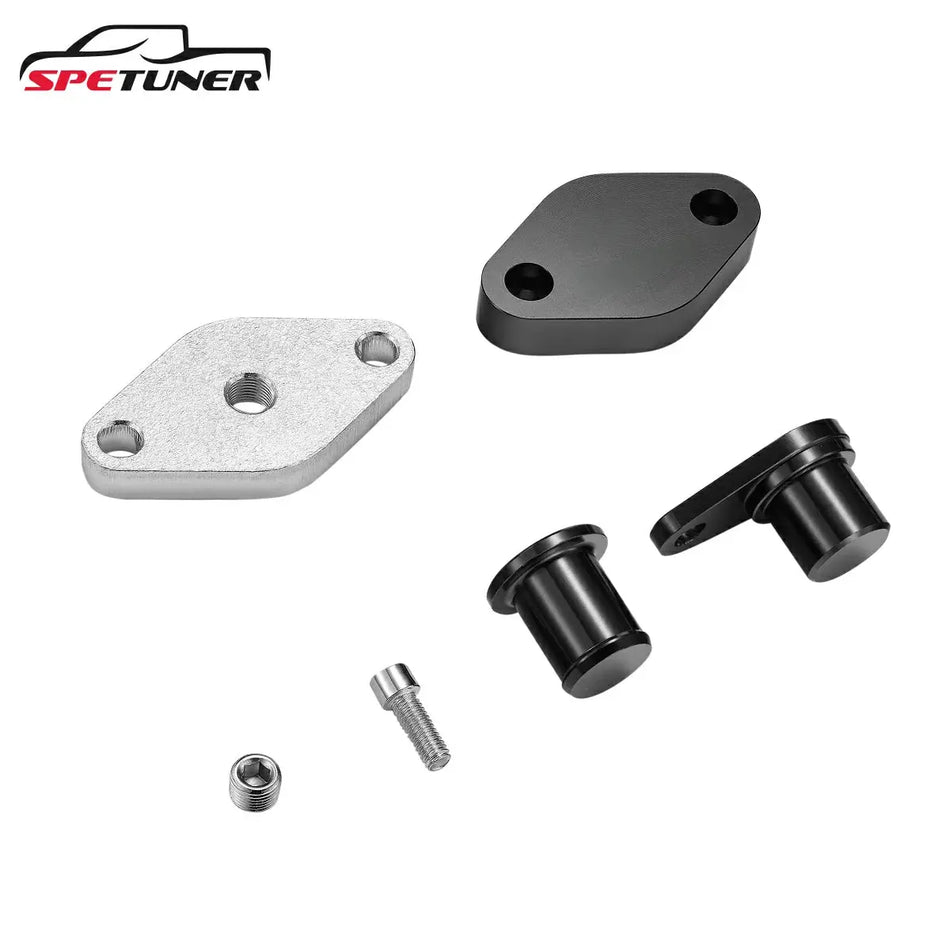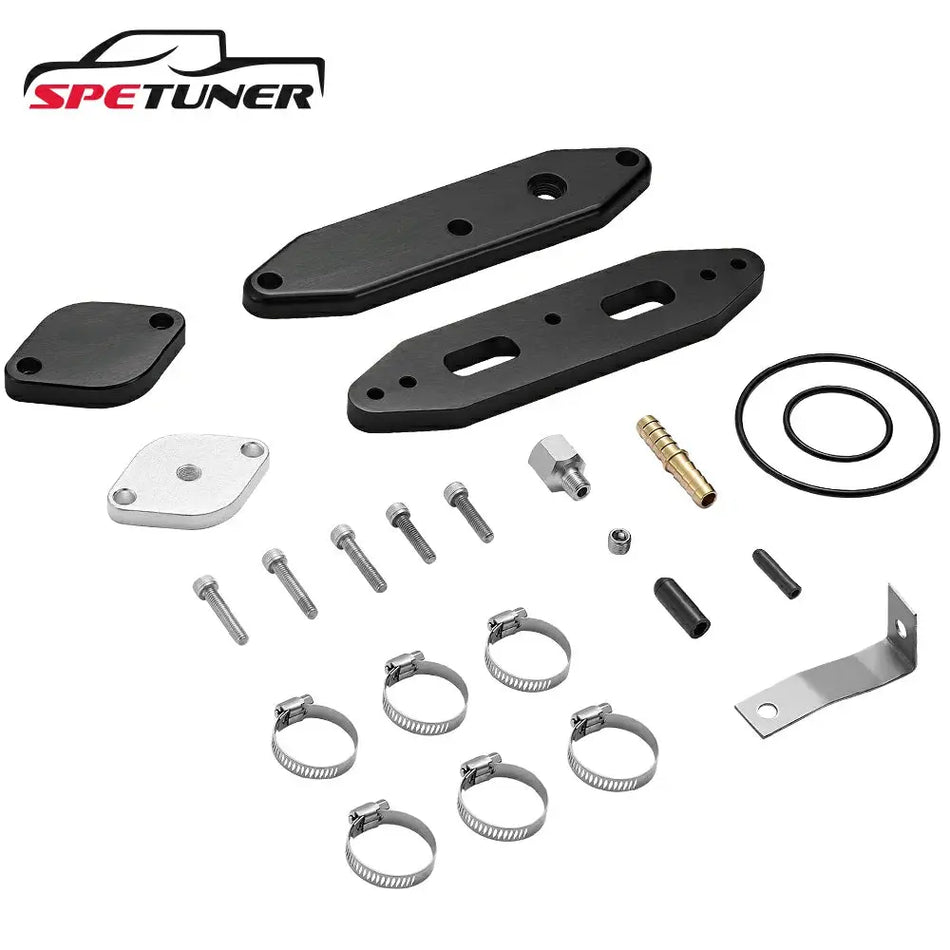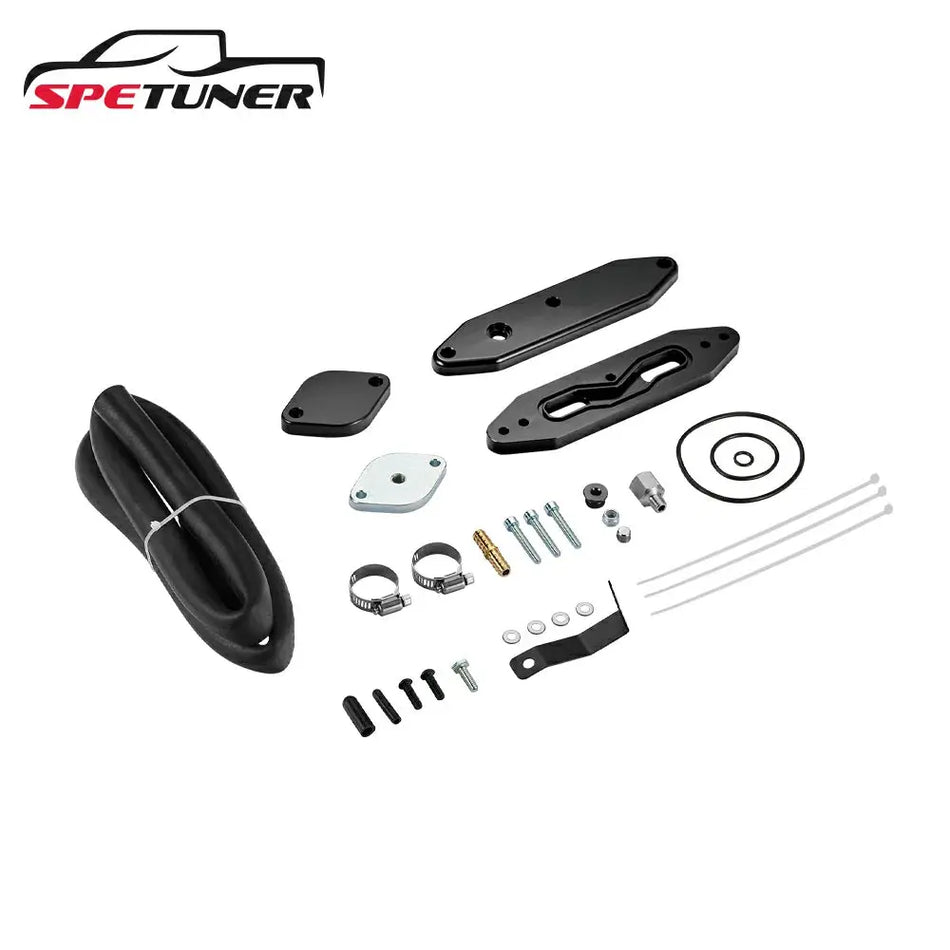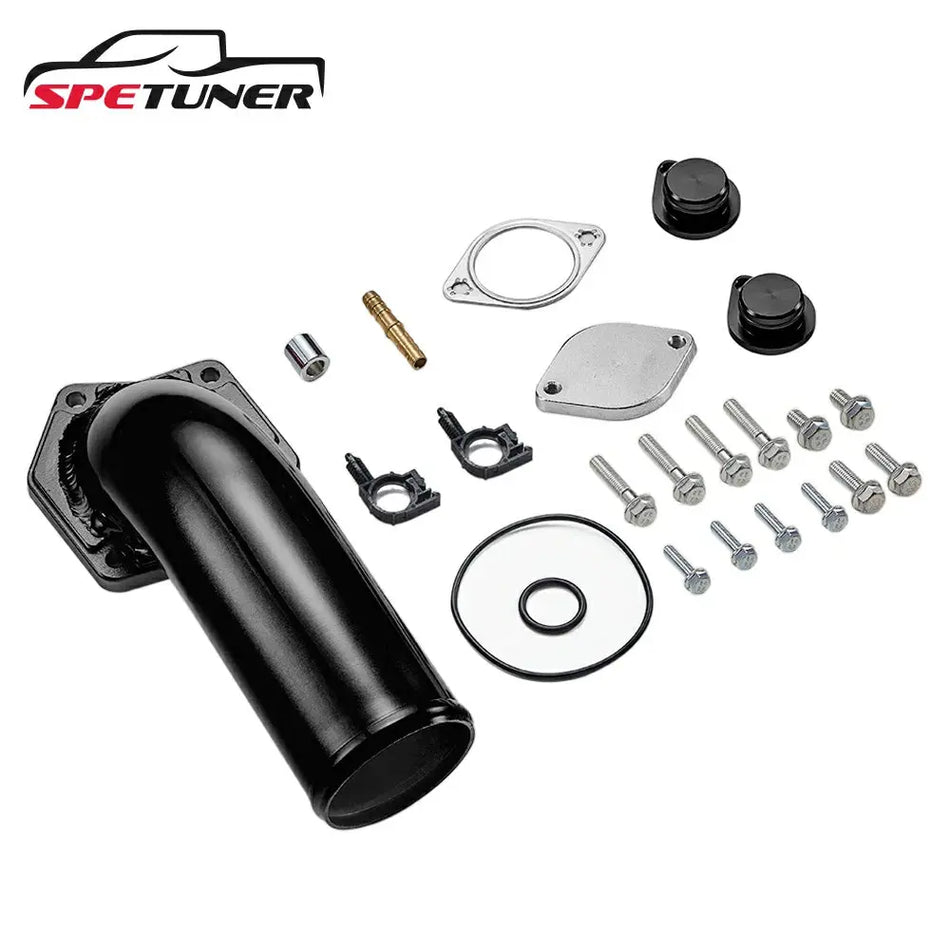Introduction: The Road Ahead
Imagine this: you’re cruising down the open highway, the hum of your diesel engine blending with the vast, empty stretch ahead. Your truck? It’s a beast. But deep down, you know it could be more than just a machine. You’ve heard whispers of something that could unleash untapped power within your engine—the EGR delete and DPF delete. These aren’t just technical terms. They’re the keys to a different world—a world where your truck performs like a lion, where every rev, every shift, feels like it’s meant to be.
But here’s the catch: understanding these modifications isn’t as easy as flicking a switch. It’s a journey. And on this journey, you’ll learn what EGR and DPF systems are, how deleting them changes your engine’s DNA, and most importantly, whether it’s worth it.
1. What Are EGR and DPF Systems?
1.1 The EGR System: Your Engine's Breath of Fresh Air (and a Little Bit of Trouble)
The EGR system feels like a paradox: it helps reduce emissions but also brings a storm of challenges. It recirculates exhaust gases into the intake manifold to lower combustion temperatures, which reduces harmful NOx emissions. Sounds good, right? But, like an unexpected guest who overstays their welcome, EGR can lead to carbon buildup and other maintenance headaches. Imagine this: your engine is trying to breathe through a cloud of soot. That’s what happens when EGR starts clogging things up.

1.2 The DPF: A Guardian and a Prisoner
Now, meet the DPF, the Diesel Particulate Filter. It’s the unsung hero in the fight against pollution, capturing soot particles from the exhaust before they have a chance to escape into the environment. But, just like a hero who gets weighed down by their armor, the DPF can become clogged with too much soot. When it does, it’s like a chokehold on your engine. Performance drops, fuel efficiency tanks, and you’re left with a filter that needs constant cleaning or replacement.

Now that we've peeled back the layers of these systems, it's time to talk about what happens when you decide to remove them. Are you ready for the real transformation? Let's move on to the next part.
2. EGR Delete vs DPF Delete: What's the Difference?
When considering performance modifications for your diesel truck, two common options that come up are the EGR delete and DPF delete. Both of these deletions can improve your engine's performance, but they impact different aspects of the vehicle's emissions system. Here’s a detailed comparison of both:
| Aspect | EGR Delete | DPF Delete |
|---|---|---|
| Purpose | Removes the Exhaust Gas Recirculation system, which recirculates exhaust gases into the intake to lower NOx emissions. | Removes the Diesel Particulate Filter that captures soot and particulate matter from exhaust gases. |
| Effect on Engine | Improves combustion efficiency, cleaner intake air, and better throttle response. | Increases exhaust flow by removing the restriction caused by the DPF, enhancing engine breathing and power. |
| Key Benefits | - Increased horsepower - Faster turbo spool time - Better throttle response - Cleaner combustion |
- Higher power output - Improved exhaust flow - Potential fuel economy improvement - Better throttle response |
| Associated Products | - EGT (Exhaust Gas Temperature) Sensor Replacement: Ensures proper exhaust temperature readings after EGR removal. - EGR Delete Kit: Includes the necessary components for complete removal. |
- Full Exhaust System (Turbo-Back): Replaces the entire exhaust system, including the Downpipe. - Downpipe + DPF Delete Pipe: Upgrades to remove DPF section and enhance exhaust flow. |
| Impact on Emissions | Increases NOx emissions, which can negatively affect air quality. | Increases soot emissions, contributing to higher particulate matter in the environment. |
| Performance Gains | - Smoother engine operation - Better fuel efficiency - More responsive engine |
- Significant power boost - Better exhaust flow leading to increased engine efficiency |
| Potential Drawbacks | - Legal issues in certain regions due to increased NOx emissions - Possible increase in engine temperature, leading to higher wear on components |
- Potential for environmental impact due to more particulate emissions - Legal issues in many areas due to non-compliance with emission laws |
| Cost of Installation | Generally lower than DPF deletes due to fewer parts required. | Typically higher due to the need for a full exhaust system replacement. |
| Overall Effect on Engine | Improves the combustion process by removing exhaust recirculation, which leads to more efficient engine performance. | Provides the engine with more freedom to expel exhaust gases, improving overall engine output and efficiency. |
Detailed Breakdown of EGR and DPF Deletes
2.1 EGR Delete: Unlocking Your Engine's Full Potential
-
How It Works: The EGR system reintroduces exhaust gases into the engine intake to lower combustion temperatures and reduce NOx emissions. However, this can lead to carbon buildup and clogging of vital engine components over time.
-
Benefits of Removing the EGR:
-
Cleaner Combustion: Removing the EGR system allows your engine to "breathe" better, improving the air intake quality and combustion process.
-
Enhanced Performance: With cleaner air and better combustion, you'll see a boost in horsepower, better throttle response, and faster turbo spool times.
-
Reduced Maintenance: Without the EGR system, you reduce the risk of carbon buildup in the intake and valves, which leads to lower maintenance costs in the long run.
-
-
Related Product:
-
EGT Sensor Replacement: After removing the EGR system, replacing the factory Exhaust Gas Temperature (EGT) sensor ensures that the vehicle's engine management system can read exhaust temperatures correctly, avoiding error codes or performance issues.
-
-
2.2 DPF Delete: Unleashing Your Engine's Roar
-
How It Works: The DPF is designed to trap soot and particulate matter in exhaust gases to prevent pollution. However, over time, it can become clogged, restricting exhaust flow and reducing engine performance.
-
Benefits of Removing the DPF:
-
Improved Exhaust Flow: By removing the DPF, exhaust gases can flow more freely, reducing backpressure and boosting performance.
-
More Power: With less restriction, your engine can generate more power, improving acceleration and overall performance.
-
Fuel Efficiency: In some cases, removing the DPF may result in better fuel economy due to the improved flow and reduced engine load.
-
-
Related Products:
-
Turbo-Back Exhaust System: A full exhaust system upgrade that removes the DPF section entirely, allowing for unrestricted exhaust flow.
-
Downpipe + DPF Delete Pipe: This solution allows you to replace just the section of the exhaust system that contains the DPF, freeing up exhaust flow and improving performance.
-
-
Legal and Environmental Considerations
While both the EGR and DPF deletes offer significant performance gains, they do come with some serious considerations:
-
EGR Delete Legal Issues: Many regions, including the U.S. and Canada, require vehicles to comply with emissions standards. Removing the EGR system increases NOx emissions, which can lead to legal trouble, fines, and even the inability to pass emissions tests.
-
DPF Delete Legal Issues: Similar to the EGR, deleting the DPF is illegal in many areas. Removing the DPF increases soot and particulate emissions, which can negatively impact the environment.
-
Long-Term Engine Effects: Both deletions can increase exhaust temperatures, which may accelerate engine wear if not properly managed. Additionally, while performance improves in the short term, long-term durability should be carefully considered.

3. Pros and Cons of EGR and DPF Deletes
3.1 The Highs: More Power, Less Restriction
Removing the EGR and DPF systems isn’t just a tweak; it’s a game-changer. You’ll feel the difference in the seat of your pants. The gains are undeniable:
· Power Boosts: More horsepower. More torque. The truck you’ve always dreamed of is right in front of you, and you can feel it.
· Improved Throttle Response: No more fighting the system. Your truck reacts quicker, like it was meant to.
· Cleaner Engine: Without the carbon buildup from EGR, your engine stays cleaner for longer, with less maintenance down the road.
· Fuel Efficiency: When everything’s running smoother, you’ll notice better fuel economy.
It’s like upgrading from a run-of-the-mill muscle car to a full-blown race car.
3.2 The Lows: What You Need to Consider Before Pulling the Trigger
But let’s not kid ourselves. Every action reacts. And with EGR and DPF deletes, that reaction can be a little harsh:
· Legal Issues: Let’s face it. Deleting your EGR and DPF systems is illegal in many places if you drive on public roads. Get caught, and you’re looking at fines or even having your truck put out of service.
· Environmental Impact: Removing these systems means more pollutants are released into the air. It’s a trade-off. Do you want more power, but at what cost to the environment?
· Increased Wear and Tear: Without these systems, some engines can experience higher combustion temperatures or more soot in the exhaust system, which can lead to long-term damage. If you’re not careful, your truck’s performance could start deteriorating faster than you think.
You’ve got the good, the bad, and the ugly. But before you make a decision, let’s talk about the law. Are you ready to go down this path? Let’s keep going.

4. Legal and Environmental Considerations
4.1 Is It Legal to Delete EGR and DPF?
Here’s the hard truth: EGR and DPF deletes are illegal in many areas. In the U.S. and Canada, removing emissions systems can land you in hot water. The EPA and other regulatory bodies keep a watchful eye, and if you’re caught, you could face significant fines or even legal trouble.
If you’re planning to take your truck off-road or use it in a way that bypasses the emissions tests, then maybe deletion is the right call. But if you’re on public roads, tread carefully. Always check with a professional and make sure you’re in the clear before you take the plunge.
4.2 Environmental Impact: It’s Bigger Than You Think
You see, while EGR and DPF deletes make your truck run better, they also make it less eco-friendly. No EGR means more NOx emissions. No DPF means more soot. It's a tough pill to swallow for those who care about the planet.
It’s something to think about. A roar from your truck is fun, but there’s a bigger roar that comes from the environment. Are you prepared to make that choice?
You’ve been given the facts. Now, let’s talk alternatives. Are there ways to enhance your truck without crossing the line? Let’s find out.

5. Alternatives to EGR and DPF Deletes
5.1 Maintenance as the Hero
You don’t always have to delete everything to get more out of your truck. Routine maintenance can be your best friend. Keep the EGR valve clean. Regularly clean your DPF. These small things add up and can keep your truck in top shape without the need for drastic deletions.
5.2 Aftermarket Solutions: Enhancing Without Removing
There are aftermarket solutions designed to give you the best of both worlds. You can keep your EGR and DPF systems but enhance them. High-flow kits, performance chips, and custom tuning can give you the power boost you need while keeping your truck within legal boundaries.
If you’re not ready to jump into deletion, there are always other ways to improve your truck’s performance. Let’s wrap this up and take a final look.
6. Conclusion: The Power to Choose
At the end of the day, the decision to delete EGR and DPF is yours. It’s a choice that should be made with knowledge and consideration. Performance or the law? Power or the planet?
But one thing’s for sure: when you truly understand the implications, you’ll make the right choice for your truck and yourself. Whatever path you choose, remember, it’s your ride. Make it roar.
FAQs
Q1: What is the difference between an EGR delete and a DPF delete?
A1: The EGR delete removes the Exhaust Gas Recirculation system, which recycles exhaust gases back into the engine to lower NOx emissions. The DPF delete removes the Diesel Particulate Filter, which traps soot particles from the exhaust gases. Both deletions aim to improve engine performance but affect different aspects of your truck's emissions system.
Q2: Can I delete just my EGR without deleting the DPF?
A2: Yes, you can delete the EGR without deleting the DPF. This will improve combustion efficiency and throttle response by eliminating exhaust gas recirculation, but your truck will still have the DPF to filter out soot and particulates from the exhaust.
Q3: Is it illegal to delete the EGR and DPF systems?
A3: Yes, deleting EGR and DPF systems is illegal in many regions, especially in the United States and Canada, due to environmental regulations. The EPA enforces laws requiring vehicles to meet emissions standards, and removing these systems can result in fines or penalties if you’re caught.
Q4: Does blanking the EGR affect the DPF?
A4: Blanking the EGR prevents exhaust gases from recirculating into the engine, which can improve performance and reduce carbon buildup. While it won’t directly affect the DPF, without the EGR, the DPF might accumulate soot at a different rate, potentially leading to quicker clogging if not properly maintained.
Q5: What happens if I delete my EGR but leave the DPF?
A5: Deleting the EGR without touching the DPF will give you better engine performance and efficiency since there’s no more exhaust gas recirculation. However, your truck will still filter particulate matter through the DPF, so you may still encounter issues with soot buildup in the exhaust system over time.
Q6: How much horsepower can I gain from a DPF delete?
A6: A DPF delete can improve your truck’s horsepower by allowing the exhaust gases to flow more freely, reducing backpressure. Depending on your vehicle, you could see anywhere from 20 to 40 horsepower or more, but it varies by engine and other modifications.
Q7: Should I delete my EGR and DPF for better performance?
A7: Deleting both EGR and DPF can significantly boost your truck's performance by increasing power, throttle response, and overall efficiency. However, it's important to weigh the benefits against legal risks, potential environmental impacts, and possible long-term engine wear.
Q8: Can I legally delete my DPF if I don’t drive on public roads?
A8: If you only use your truck off-road or for racing, deleting the DPF may be legal, depending on your location. However, if you plan to drive on public roads, it's likely illegal due to emissions laws. Always check local regulations before making any modifications.
Q9: Is it necessary to delete both EGR and DPF for maximum performance?
A9: While deleting both EGR and DPF can give you the best performance boost, it’s not absolutely necessary. You can choose to delete only one system, such as the EGR, to improve combustion efficiency, while keeping the DPF in place to filter particulates.
Q10: What are the risks of deleting both EGR and DPF?
A10: The main risks include potential legal consequences, as both deletions violate emissions laws in many areas. Additionally, removing these systems can lead to higher exhaust temperatures, increased wear on engine components, and potential long-term damage if not done correctly.










